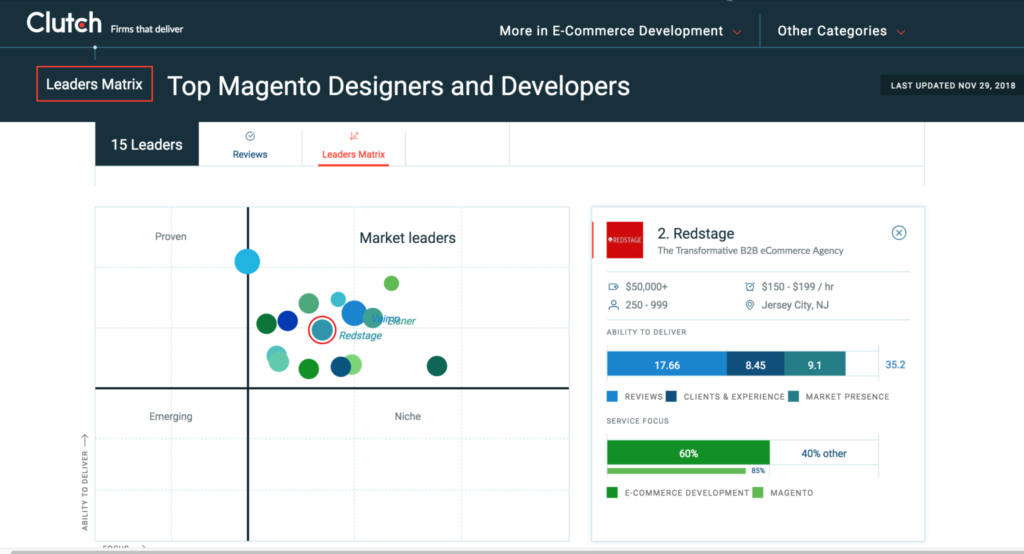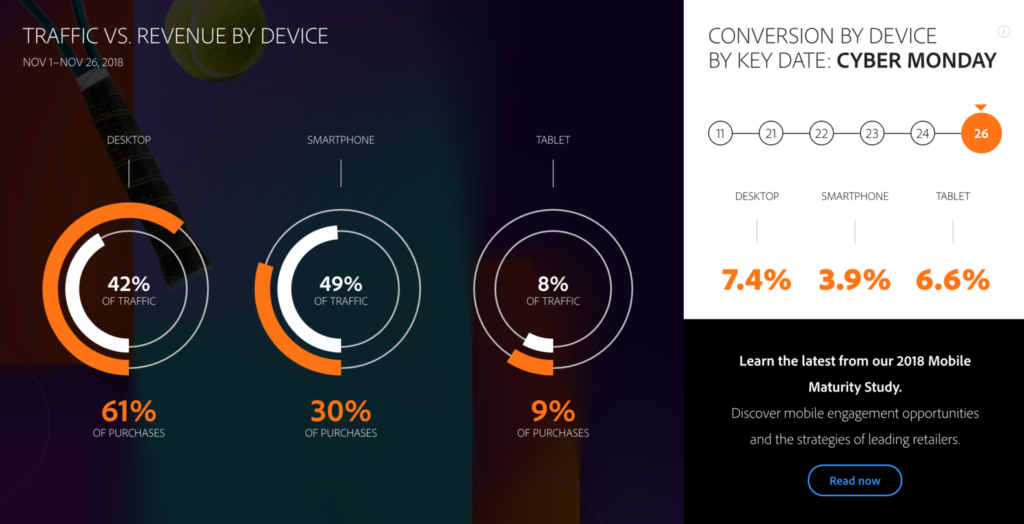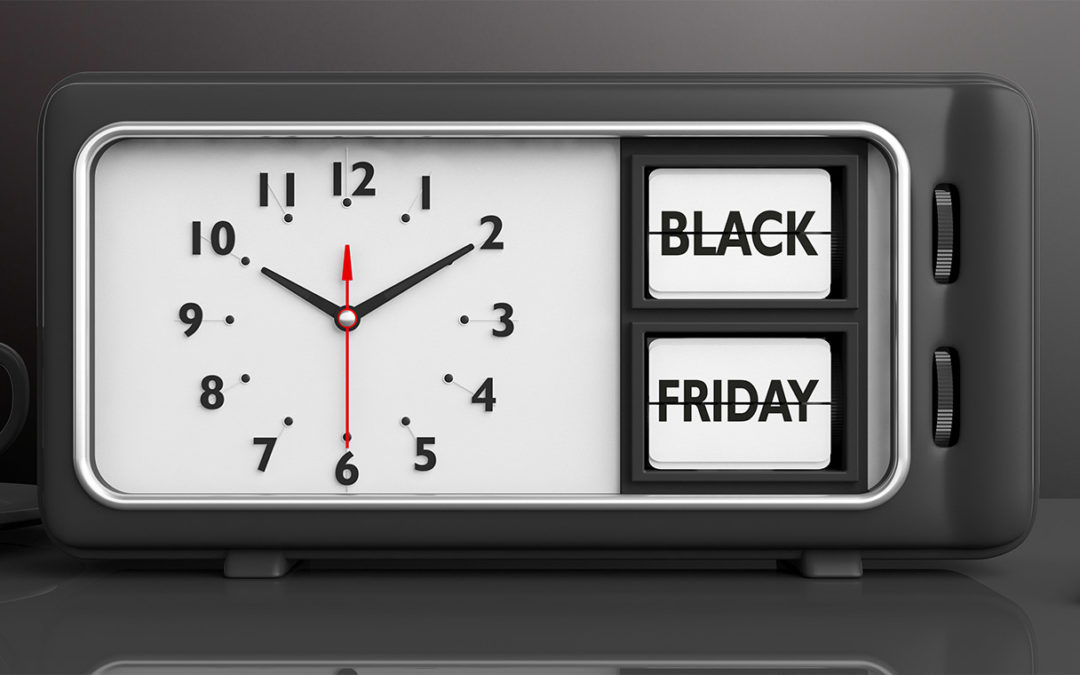
by Don Pingaro | Nov 29, 2018 | eCommerce Platforms, Press
Earlier this year, Clutch.co awarded Redstage with the titles of Top eCommerce Developers, Top Magento Developers, and Top Shopify Developers in New York. Yesterday, Clutch.co announced Redstage’s as a Global Leader in B2B Business Services for 2018.

In the few short months since the last announcement, the hard work and determination of our teams around the world have earned us the title of “Top Global B2B Company for 2018” and we thank our clients for all of their support. Redstage is now a Clutch Global Leader, part of the Clutch Global 1000, and ranks number 2 for Top B2B Magento developers and designers in the world.

This announcement comes soon after Redstage was ranked among the Top Ten Best eCommerce Web Design Companies by WebDesignRankings.com for the second consecutive year. Additionally, the agency has also been listed on Clutch’s sister site, The Manifest, as a Top Magento Company of 2018!
Our team is thrilled to wrap up the year with these distinguished accolades. We look forward to continuing our strong B2B practice in the year ahead! Thanks again to our clients and partners for your collaboration, trust, and positive reviews. These awards would not be possible without you. It is a pleasure and an honor to share in your success.
View our client reviews here on Clutch and find us on DesignRush!

by Don Pingaro | Nov 28, 2018 | Commerce Strategy
At this very moment, retail executives around the US are likely screaming about their Black Friday and Cyber Monday sales performance. For some, these sounds resemble a triumphant war chant, for others, these are the shrill cries of defeat. The reason? Mobile-first adoption.
No matter where you stand, this data changes the eCommerce landscape. Here are the latest stats and key trends from the long-weekend of holiday sales events. We will update this article as soon as new data is released, so make sure you subscribe to be the first to know!
Thanksgiving Takes an Extra Helping
On Thanksgiving day, as of 7:00am Pacific Time, U.S. consumers spent $406 million. By 2pm, Adobe announced that this number skyrocketed to a whopping $1.75 billion, representing a 23% increase over sales in the same time period in 2017. By the end of the day, Americans beat out last year’s sales for the day by a shocking 28%, resulting in a shocking 3.7 billion dollar Thanksgiving. Adobe initially projected a $3.1B bottom line for the holiday.
Mobile Wins Big
Here’s a quick breakdown of the major events in bite-size chunks:
Thanksgiving Day
Black Friday
$2.1 billion or 33.5% of sales came from smartphones this Black Friday. Another 10% of sales, or roughly $627 million, came from tablet users. All in all, the day yielded an impressive $6.2 billion, a 23.6% increase over 2018.
Cyber Monday Breaks The Internet
Here’s the big one. Cyber Monday sales shattered all previous records for online sales… in U.S. history.
“Cyber Monday [topped] $7.9 billion by the end of the day, making it the largest online shopping day of all time in the U.S. This represents a 19.7 percent increase year-over-year (YoY) as of 7:00 p.m. ET. In comparison, Thanksgiving Day and Black Friday brought in $3.7 billion (28 percent growth YoY) and $6.2 billion (23.6 percent growth YoY) in revenue, respectively.”
BusinessWireHere’s the share of devices (as of ~1:30pm ET November 27, 2018):
 See more live stats at ExploreAdobe.com
See more live stats at ExploreAdobe.com
7 Days of Spectacular Sales
Additionally, Adobe’s latest report notes that this November has seen 7 days where total sales broke the $2 billion mark (as of Nov. 28, 2018)… Thanks in no small part to the mobile sales spikes.
Omnichannel Adoption Drives Sales
The trend of “buy online, pick-up in-store (BOPIS)” continued, with the trend growing 50% during this past weekend over 2018. According to Adobe, this spells dollar signs for omnichannel merchants: “As the online and offline retail experience continues to blend, retailers with physical stores drove 28 percent higher conversions online.” While this trend helped retailers increase their share of online earnings, in-store sales lagged far behind.
It’s time to join the mobile-first movement. As Adam Morris, Redstage CEO notes, “Cusotmers are no longer expecting an in-store Black Friday and Cyber Monday, but instead, an omnichannel experience.” While many retailers successfully ramped up their omnichannel strategies for this holiday, the data shows this trend is here to stay, and more work is needed.
If you want to reduce mobile checkout friction before the holidays are over, contact us asap! To see the results we’ve achieved with our recently launched Magento Community Initiative, find the latest data here.
Final Thoughts
These extravagant stats spell success for an industry racing to close the mcommerce gap. It’s seems the industry is all-aboard the mobile-first customer experience wave. As Internet Retailing points out, retailers may have finally reached ‘always-on‘ mobile consumers. Now it looks like the key areas for improvement are streamlining mobile checkouts, and optimizing omnichannel experiences.
Update Nov. 28, 2018
Black Friday + Cyber Monday Stats You Need To Know
Here’s a breakdown of YOY holiday sales by device and region based on data collected by our partners at Nosto!
-
- United States
Desktop: 39% (2017) / 34% (2018)
Mobile: 56% (2017) / 61% (2018)
Tablet: 5% (2017) / 3% (2018)
-
- United Kingdom
Desktop: 47% (2017) / 40% (2018)
Mobile: 42% (2017) / 48% (2018)
Tablet: 11% (2017) / 12% (2018)
-
- Northern Europe
Desktop: 39% (2017) / 37% (2018)
Mobile: 51% (2017) / 57% (2018)
Tablet: 10% (2017) 6% (2018)
-
-
- France
Desktop: 69% (2017) / 67% (2018)
Mobile: 19% (2017) / 22% (2018)
Tablet: 12% (2017) / 11% (2018)
- DACH
Desktop: 40% (2017) / 53% (2018)
Mobile: 42% (2017) / 39% (2018)
Tablet: 8% (2017) / 8% (2018)
Update Nov. 29, 2018
PayPal Mobile Payments Get A $2B Holiday Boost
-
- For the first time in PayPal history, mobile payment volume topped $1 billion, and did so on both Black Friday (November 23) and Cyber Monday (November 26). – PAYMNTS
-
- Adobe reports U.S. shopping carts averaged $138.00 during Cyber Monday, a 6% bump over last year.
-
- 49% of Black Friday traffic came from smartphones, driving 30% of online sales.
- “In the [PYMNTS] Checkout Conversion Index report, the 30 merchants with the fastest, most streamlined online checkouts ranked well. Conversely, the 30 merchants with the lowest scores offer a widely inconsistent checkout experience…”
Update Nov. 30, 2018
Cyberweek 2018 Trends Report
Our partners at BigCommerce identified a few additional trends in their Cyberweek 2018 Trends Report. Key findings include:
-
-
- While online stores continue to have the highest AOV for any sales channel, Facebook took second place, accounting for “70% of total GMV” for Fashion and Jewelry brands using the channel. Home and Garden brands selling on Facebook came in at 16% GMV.
- “The Fashion & Jewelry and Toys & Games verticals saw the highest GMV increases over 2017.

by Don Pingaro | Nov 21, 2018 | Commerce Strategy, System Integrations
The 2017 holiday rush was a tipping point for eCommerce optimization. Between mobile sales taking over traditional retail and other trends that took the industry by surprise, the holidays gave retailers myriad reasons to rethink digital strategy. Today, with Black Friday looming only days away, 2018 stands to be another make-or-break point for online sellers who did or didn’t adapt.
Our partners at Shoppimon put together this list of last-minute reminders for retailers prepping for the big week of sales ahead. Dive in to discover the top recommendations for managing traffic, guaranteeing uptime, and perfecting conversion optimization that just might save your store this season.
#1. Test the full sales funnel – from landing page to checkout.

The full sales funnel should be tested and optimized leading up to –and throughout– the holiday season. However, some key points of weakness that lead to significant business downtime are:
1. Search: 0.7% of all issues Shoppimon sees are problems with search. When search isn’t working on a website and shoppers can’t find what they’re looking for, it’s all too easy today to buy elsewhere.
2. Page Errors: Exposed error messages are surprisingly common. In fact, they’re responsible for 0.6% of all issues Shoppimon identifies. These pose a problem for several reasons. The first is that they stop the shopping process dead in its tracks. As a result, they also scare shoppers off. Not only are customer unable to complete a purchase, but after seeing an error message, they may lose all trust in the site going forward. Lastly, depending on the error, exposed messages can pose a serious security risk to a website… Ensuring these types of message don’t happen should be a top priority.
3. Error Message Text: To cover all your bases, make sure the language in your error messages is friendly and less automatic. This will let the customer know you are aware a problem is occurring, and that it may be fixed soon. “Error 506!” sounds a lot worse than “Hey there! We are experiencing a slight issue due to heavy site traffic. Check back in 15 minutes and the problem should be resolved. Happy holidays!”
4. Missing Product Images: If a shopper can’t see a product, they won’t buy it, end of story. Missing product images are surprisingly common. In fact, they make up 2.1% of all issues we spot. Understanding when this happens and fixing it before you lose a sale is a must. Monitoring your site will help keep you aware and in the know about missing product images and info.
5. Add to Cart & Checkout Errors: You are likely losing 4% or more of your total sales to issues occurring in these two key shopping stages. Issues here range from missing add to cart buttons to problems with payment providers. The average retailer will lose approximately 13% of sales to functional and performance-related website issues during the holidays. To avoid this, thoroughly test your conversion funnel and upgrade your website in advance of the seasonal surge. It can make a significant difference to your bottom line. If you’re out of time for a significant upgrade, monitoring your site closely and proactively address issues as they occur. It will have a dramatic and positive impact on your bottom line.
#2. Stress-test your site’s ability to handle increased traffic.

Under enough stress, every system will fail. Stress-testing your website before the holidays is a great way to find out if additional traffic could be your downfall. Leading up to Black Friday, we recommend you do both of the following:
1. Load Testing: making sure that your site can handle a given number of users/requests consecutively and concurrently.
2. Completing A True Stress Test: load the site to the point that it crashes to see how that crash is handled by your software (and potentially, your team).
When a site is overloaded, if a server is properly configured, it should be able to handle the benchmarked number of consecutive or concurrent requests, after which requests will be queued. If you then pass the benchmark for you queuing, requests should time out, rather than the site itself going down completely.
If your server does crash, splitting the load across other third party solutions like CDNs will help in the long run, so the servers don’t need to handle each and every request. However, if you need a last minute fix you can quickly tune the configuration of your servers to change the amount of memory they use. You may also be able to manage the number of requests they handle (assuming your code has been built to allows this).
#3. Be prepared to scale-up on the fly (and know how to).

The first thing an eCommerce manager should do is simply talk to their team. Understand what is already in place and what it would take to scale-up their web and database servers if needed. In an ideal situation, when a website is on a cloud platform, you should have deployment automation that allows you to quickly spawn more servers (which should only take a couple of minutes to complete). This does however require that automation is already in place to allow you to do this, and that the code was written in a way to support the expansion to additional hardware. And this is true not only of web servers, but database servers as well.
In a typical eCommerce setup, the biggest bottleneck is the database, which also tends to be the hardest to scale in an emergency situation. With limited time to prepare before Black Friday and Cybyer Monday, your top priority should be to check if your database hardware can scale if necessary. This is critical. If the situation arises where the database needs to be scaled and it wasn’t prepped in advance, it will usually result in significant downtime for the full site.
Going deeper into the issue, Redstage CEO Adam Morris states, “…when downtime occurs, or things do go wrong during the holidays, the effect of those issues is compounded because you’ve probably expanded your customer service team to make up for higher demand, as well as increased marketing budgets to attract more holiday spending. So when things go wrong, those marketing dollars are lost, and [customer] support may suddenly be relegated to a more junior team with less experience and a lower quality of service.” (Check out more insights on holiday emergency management from Adam Morris here on Shoppimon’s blog).
#4. Find problems before your customers do.

At Shoppimon, we see retailers monitoring their websites in a multitude of different ways; From manual checks conducted by different team members, to using completely automated systems like Shoppimon, and everything in between. Unfortunately, many of the systems require resource-heavy investments, not just for setup, but also to understand them and react to the data they generate.
While we know that monitoring automation is key for any business at scale, it’s important that a team’s resources spend as little time as possible on the monitoring itself. Instead, team members should be free to spend their time making a website or application better, fixing bugs, and creating a great customer experience.
Luckily, Shoppimon supports script-free and integration-free automated setup, which takes minutes. The solution also automates issue prioritization and notification, so users get critical information when it’s most needed, but never bothers them when it’s not.
These benefits have made a huge difference for our customers leading up to the holiday season. We’ve seen brands successfully roll out new updates and upgrades just before the sales surge, and also helped them identify better ways to plan for next year.
Each year we see the biggest challenges and successes of major brands in the eCommerce Industry. Last year, in our Online Store Health & Usability Index (OSHU Index), we saw brands like Birchbox, Dollar Shave Club and Saatva excel during the holiday season, with consistently faster load times and fewer issues both leading up to and during the holidays. However, we saw other retailers, like One King’s Lane, that experienced significant downtime during Cyber Monday, really struggle. The difference relies on your ability to react.
Final Thoughts:
Monitoring your online store for bugs and the ability to react quickly will determine the winners and losers for 2018. Testing is paramount (especially if you had issues last year), which means diving into your funnels, your site, and being prepared to tackle anything that needs fixing, fast. However, without a monitoring solution in place, you might not notice significant issues on your site causing lost revenue every minute. Do your due diligence and walk through each stage of the customer journey to make sure your holiday haul will be a happy one. Let us know what you think of these tips in the comments below, and enjoy the holidays!
For more insights on last-minute holiday strategies, check out this post from our partners at Brightpearl on omnichannel & backoffice prep!

by Don Pingaro | Nov 16, 2018 | System Integrations
Sellers wait anxiously as distant bells chime through the chilly air. Less than a week remains until Black Friday, and projections are looking good. Despite the ghost of retail’s past taking down giants this year, U.S. retailers are positioned for a “Trillion Dollar Christmas” in 2018 (eMarketer).
In line with holiday tradition, Redstage and our partners have an early gift for online merchants. Together, we’re launching this last-minute holiday prep series to ease your seasonal anxieties. The geniuses at Brightpearl combined this year’s top trends and strategies to create the ultimate holiday guide for omnichannel and back office prep.
Use this post as your last-chance optimization guide so you can sleep soundly and avoid the dread of feeling there’s one last thing you forgot. Here’s 8 critical areas you need to master to survive this year’s holiday rush:
#1 Understand your omnichannel buyer journeys

To truly tackle omnichannel retail this holiday season, there are a few steps you need to take. The first is to understand your omnichannel customer and the path they take to get to your eCommerce website or brick and mortar store, so that you can ensure you’re on the channels they use the most.
Nicole from Retail Minded has identified the following omnichannel buyer journeys. Which do you focus on?
1. The Omnichannel Savvy Customer:
○ The journey: Visits store > Connects on Facebook > Buys online via mobile
○○ This customer typically spends 10% more when shopping online
2. The Last-Minute Buyer
○ The journey: Searches online via mobile > Buys online via tablet or desktop.
○○ 75% of last-minute buyers rate shipping costs as the most important buying factor.
3. The Researcher
○ The journey: Searches online > Visits multiple stores > Continues researching online > Buys from one of the original stores
○○ It’s said that over 92% of online consumers don’t intend to buy during their first visit.
4. The Impulse Shopper
○ The journey: Visits store > Buys in store almost immediately.
○○ 5 in 6 Americans admit to impulse buying.
5. The Feel-Good Buyer
○ The journey: Scrolls through social media > Buys online or in store.
○○ 45% of digital buyers worldwide say reading reviews, comments and feedback on social media influence their shopping behavior.
#2: Gain a strong presence on your customers’ most used channels

Today’s digital age means connecting with customers has never been easier. As the above buyer journeys show, the majority of shoppers experience multiple touchpoints before buying. It’s important to show your presence across a number of channels and offer a consistent customer journey throughout (based on what you know about your own customers).
The following channels are a guide to show you what you need to consider adopting within your business:
- eCommerce
- Brick and mortar
- Social media
- Online marketing
- Email marketing
- Special events
- Mobile
- Location based marketing
- Loyalty programs
- Text message marketing & live chat
“Know which popular channels your customers are most frequently fulfilling their orders, so that you know where to concentrate your marketing and inventory planning.” – Anthony Payne, VP of Global Marketing, Brightpearl
#3: Use omnichannel fulfillment as a differentiator

Getting omnichannel fulfillment right can have a huge payoff but it can be one of the most difficult areas to implement without the right technology. This is because it requires inventory to be tracked across all physical locations and sales channels.
Some key examples of how omnichannel fulfillment can be used as a differentiator this holiday season are listed below. Which are you taking advantage of this season?
- Click and collect: The option for a customer to purchase online and pick up in store. By offering this service, you can expect an immediate uplift in revenue based on impulse purchases made in store when picking up items.
- Ship from store/endless aisle: The ability to offer products not available at the location the customer originally visited. This helps avoid losing a customer if a product is out of stock at a particular location.
- Online store inventory availability: The ability to lookup inventory at a given store online. This is important as it’s said that 33% of millennials (today’s most influential spenders) won’t visit a store if online inventory availability isn’t published.
#4: Clean up your inventory data

No one likes the idea of disappointing a customer due to inaccurate inventory availability, and especially not when that item was intended as a gift for someone else. Therefore, ahead of the holiday season, you should always endeavor to do a complete inventory count in your warehouse, ensuring inventory is correct across your back office and sales channels.
Furthermore, it’s also important that you know (and have recorded) your true landed costs as well. The holiday season is driven by discounts, promotions, and flash sale days like Black Friday and Cyber Monday, so getting a clear gauge on your true landed cost of products (e.g. the associated freight, duty, tax, and storage expenses) ahead of time is essential for making business decisions on pricing and for final supplier selections.
#5: Analyze your sales and inventory data

From knowing what items your customers love the most to knowing where you should be stocking your products, last year’s data is this year’s sales gold mine. At the very least, you should use your back office data and reports to analyze the following (and act on your findings) ahead of the holiday season rush. Check the box if you’re using your data for the following:
- Best selling products: Stock them again if possible or look for similar alternatives
- Top performing channels, stores and locations: Ensure you’re fully stocked up on your best channels
- Most loyal customers (MVPs): Send offers and discounts to lure them back to your website or store
- Stock-outs: Consider ordering more inventory or implement a process that ensures reorders are fast
- Returned inventory reports: Ensure you know why inventory is being returned; you may need to add more detailed product descriptions, change suppliers or improve packaging
- Time to ship: Consider the use of automation bots to speed up your time to ship and avoid unnecessary fulfillment delays
- Warehousing inefficiencies: Implement barcode scanning in the warehouse to power up your staff and reduce cases of human error
- Checking for business-wide integration
It’s not too late to ensure your different departments are all talking to each other where relevant. We suggest you focus on the following as a priority. What tech are you using to keep teams informed, in the loop, and up to speed?
- CRM + Marketing: Ensures order confirmation emails, discounts, offers and other marketing messages can all be personalized, which increases their ability to convert.
- eCommerce + Shipping: Customers want to be able to track their orders all the way to their door, which means shipment notifications must contain tracking references. This is where easy to use back office shipping integrations like ShipStation or Shiptheory become your new best friends.
- Inventory + eCommerce: Avoid stock-outs and disappointing customers by ensuring your inventory levels can be automatically updated across all your sales channels whenever an item is brought into stock, shipped or returned.
- Inventory + Accounting: With holiday season discounts and sales taking place, knowing your true margins is essential. With each inventory update, you should ensure your accounting is updated automatically… after all, who wants to be updating their accounts manually during the holiday season rush?
#6: Automate your workflows
If you already have a back office system that allows for automated workflows, then you should definitely make use of it as best you can. When setting up automation bots, it’s recommended that you map out your current workflows first in a tool like Lucidchart. This allows you to identify where bottlenecks can be removed by automation software.
“Make sure your operating systems don’t need any final touches and any special workflows are all set up before the holiday season because as you get closer and closer to the big day, your order volume and site traffic will just continue to increase. Fast and Frictionless experience is key for all your busy customers. Both before and after the holidays.” – Justin Press, VP of Global Customer Success, Brightpearl
#7: Make sure you’re ready for the inevitable holiday season returns

It’s estimated that 28% of holiday gifts bought last year were returned at a value of $90 billion. We all know that returns are inevitable after the drama of the holiday season, but you should be putting in steps now to ensure you’re able to ride the returns tsunami like a surfing pro.
Here are a few actionable steps for you to take as a starting point:
- Assess your current ability to handle holiday season returns
- We’ve recently created a self-assessment that enables you to assess your current returns processes. You’ll also gain actionable advice along the way for what needs to be improved. Check it out here.
- Understand your return rates and reasons for return
- Analyze your returned inventory reports from last year to identify common themes for why items were returned. Do you need to source a new supplier to improve quality? Should you stop stocking a certain item altogether? Does your packaging need to be improved? Try to isolate the problem and prevent it from happening again this year.
- Give customers what they want
Everything that happens in exceptional events (such as when items need to be returned) is where your customers will measure the service they receive from you and whether they want to shop with you again, so it’s important to understand what your customers want (and expect) from your returns process. A survey sponsored by shipping technology leader Endicia revealed these insights about American shoppers:
- 51% want free return shipping
- 36% want an easy and convenient shipping process
- 12% want a swift refund or credit
- 89% say they’ll shop again at an online store after a positive returns process
- 62% want a returns label in the package
- 61% want an easy to print returns label
#8: Identify your “serial returners”

Recent data suggests there is a rise in “serial returners.” These customers are identified as those who purposefully buy more items with the intention of returning some. By flagging this type of customer within your CRM software, you can ensure they don’t receive certain marketing promotions or discounts as they are already likely to inflate your return rates. Check out Brightpearl’s Returns Readiness Guide to assess whether or not you’re ready to face the returns tsunami this season.
Author Bio: Justine Cross is the Content Marketing Executive at Brightpearl – a cloud-based back office solution for retailers and wholesalers. Brightpearl allows you to provide a truly omnichannel experience for your customers, whilst unifying all of your sales channels, inventory, accounting, CRM, suppliers, fulfillment, warehouse management, reporting and POS in one single automated system.


















Recent Comments